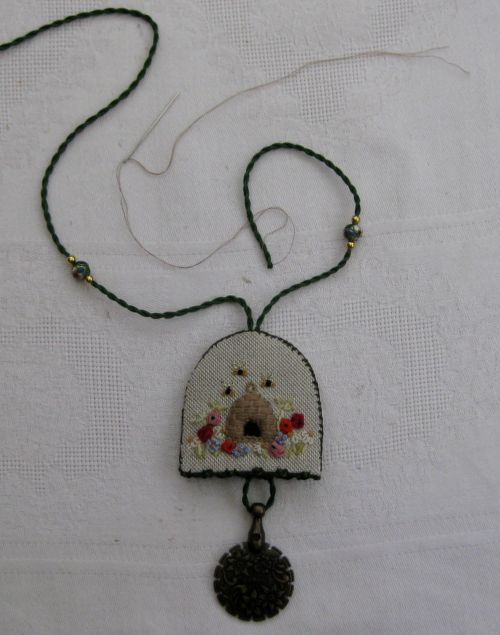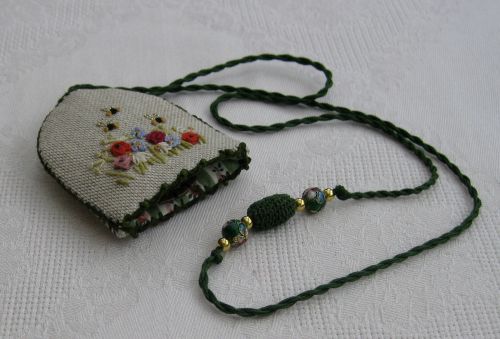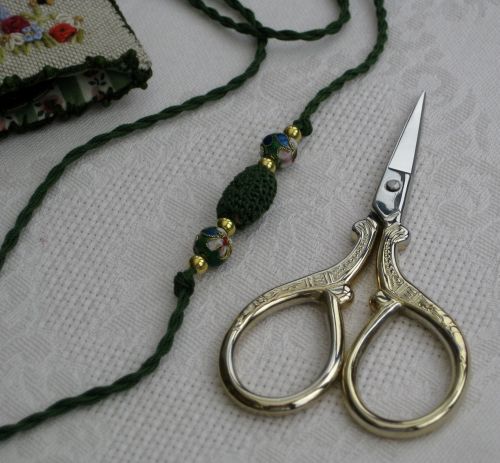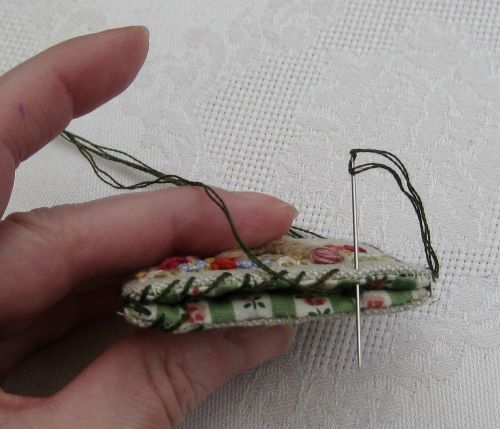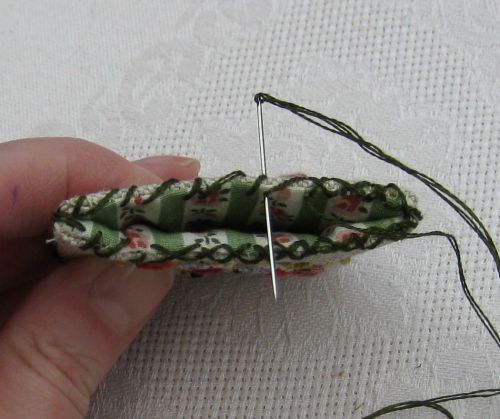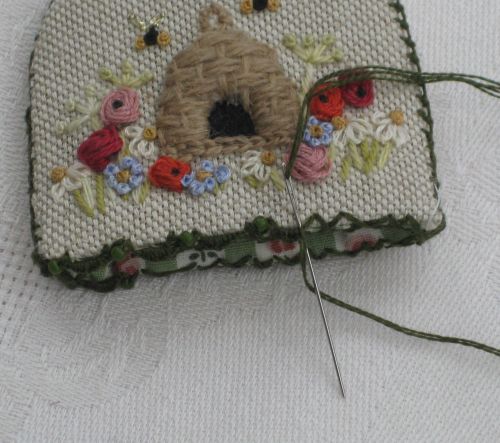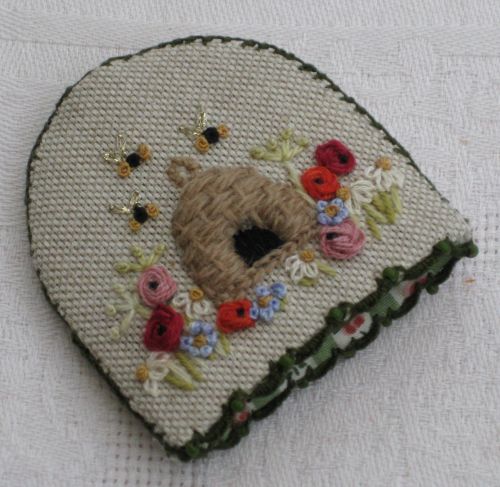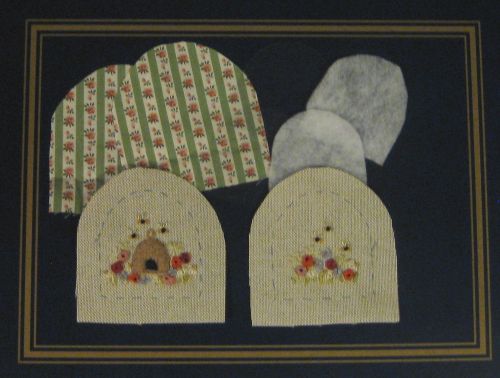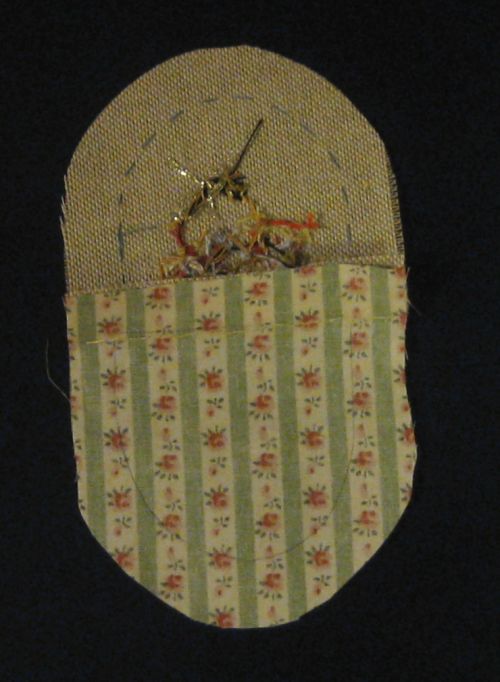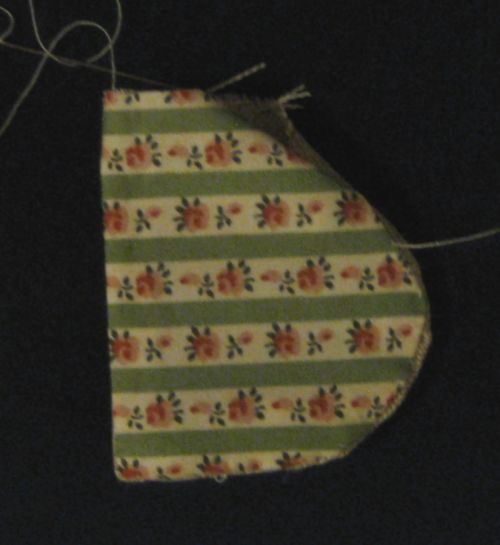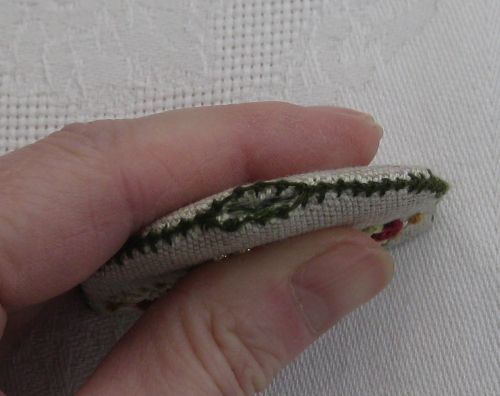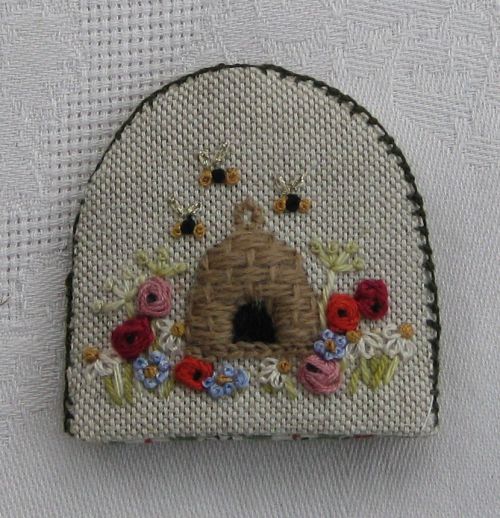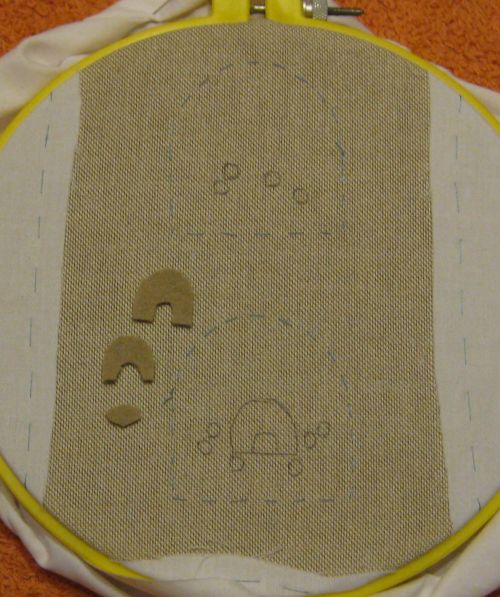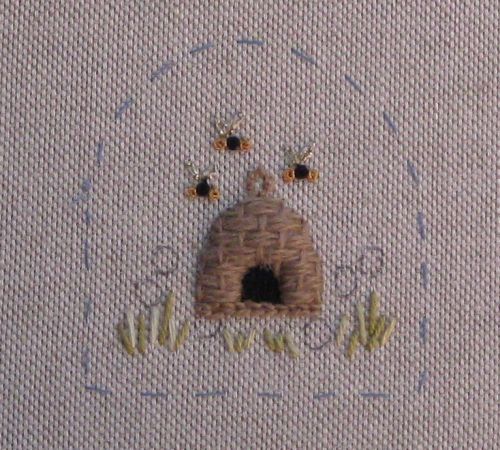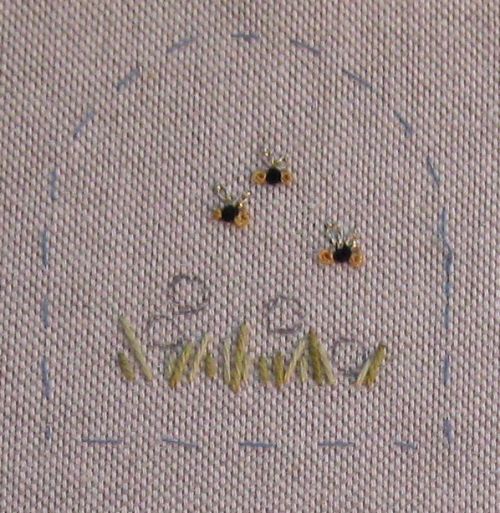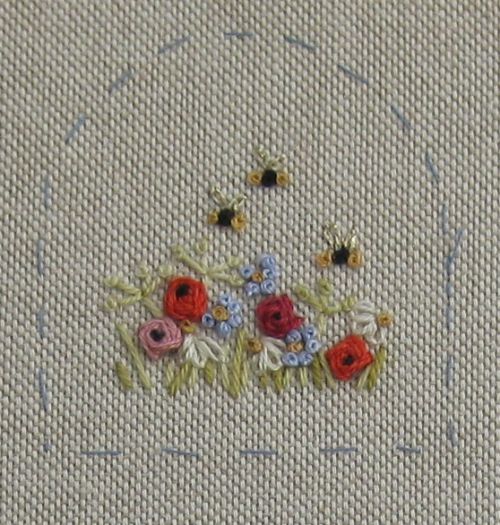This is the last part that I need to do to finish the thread-cutter cover that I am making. I had to read the instructions for this part several times in Carolyn Pearce’s book ‘Home Sweet Home: an embroidered workbox’ to get the hang of it, and it took a while before it all made sense. Maybe it was just me! But once I’d understood it, I realised it’s a very clever way of making a necklace cord without a clasp.
First, I made a twisted cord from Anchor stranded cotton, and threaded on a gold bead, a cloisonne bead and another gold bead, then took the cord down through the top of the cover, looped on the cutter itself, then threaded it back up through the hole again (be very careful not to split the cord as you come back up, as I did!), adding three more beads again. The needle and beige cotton is used to get a ‘sharp end’ to the cord, so that it will go through the small beads easily.
This is the clever bit to make the join in the cord: first, loosely make a knot in the cord on both lengths *nearest* to the cutter, but after the beads have been threaded on. Don’t pull these knots tight just yet. Put tight knots in the ends of the cord at both ends, to stop the cord from unravelling. Overlap the cord ends by about half an inch (check that the cutter cover hangs at the correct length for you before doing the next bit). With strong cotton, stitch through the overlapping cords to join them, then trim the end knots off.
Take a small piece of felt, half an inch by an inch and a quarter, and roll it tightly around the join, stitching over the overlap, and tying off each end of the felt roll to pull in the ends a bit. Make this as neat as you can.
Then, with a strong embroidery thread such as Perle 12, make long stitches from one end of the wrapped felt oval to the other, all the way round it (Carolyn suggest 14 lines, but I could only manage 9), so that the felt oval looks ‘stripey’! Then work Detached buttonhole stitch over the whole of the felt oval, using the long threads as a base for the first round only, covering all of the felt by working the stitches closely together. I couldn’t take photos of that bit, as once I started, I realised I couldn’t put it down, or it would all unravel! When completed, the buttonholed oval looks sort of knitted.
Finally, loosen the temporary knots beyond the beads on each side, slide the beads up to the buttonholed oval, and tighten the knots again, to hold the beads in place.
This is the finished thread-cutter cover. I’m so pleased with this!
I think it’s my favourite out of all the ‘smalls’ I’ve made so far.
It’s a useful accessory, and very pretty, too.
And that way of joining the cord is just so clever and neat!
~~~~~~~~~~~~~~~~~~~~~~~~~~~~~~~~~~

